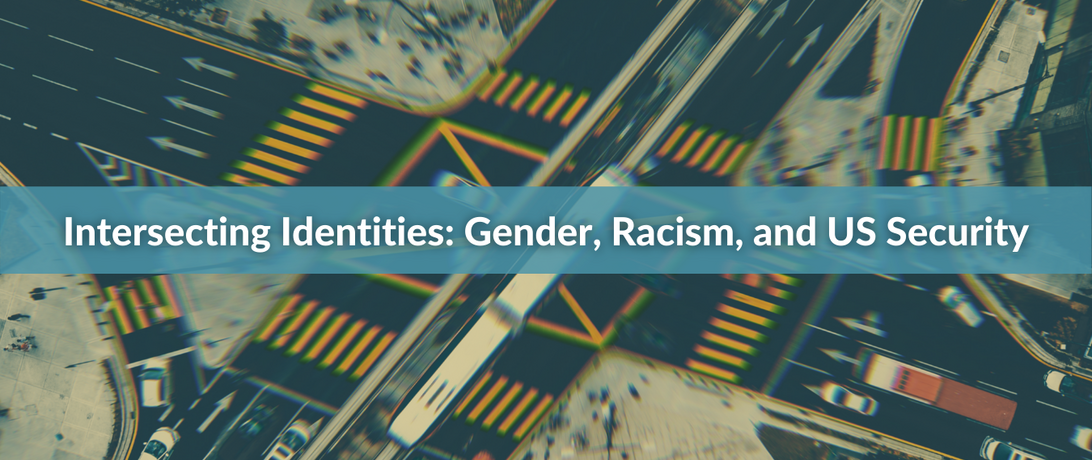
Intersectionality is a tool that gives us better insight into how to tackle social inequality. What happens when it is not applied to peace and security?
On Tuesday, March 16, 2021 a white man allegedly murdered eight people, six of whom were Asian women. Police made excuses for the suspect, saying he had had a “bad day.” The shooter told police that the murders had been an attempt to rid himself of the temptation that drove his “sex addiction,” and that they were not racially motivated. The police echoed this sentiment in early press conferences, saying it was too early to determine whether or not race had been a factor.
As someone that works on the intersection of gender and security, it is clear that the police, and the suspect, are lacking an intersectional lens in their analysis of the situation.
Intersectionality is a tool that gives us better insight into how to tackle social inequality. Intersectionality was originally coined by Kimberlé Crenshaw to explain the “double bind” of being both Black and a woman, and the ways in which those two identities inform one another. It has now been expanded to encapsulate all identities. It is essential to use intersectionality in order to fully understand this specific example of the Atlanta shooting, and how it can help us better understand both racism and sexism.
As has been pointed out, by attributing the murders to a supposed sex addiction and ruling out any racialized motivation, both the shooter and the police leave out a crucial piece of this atrocity -- American white supremacy has an extensive history of fetishizing Asian women. With violence against Asians and Asian-Americans on the rise, it appears purposefully ignorant to disconnect the Atlanta murders from anti-Asian racism. It was the victims’ identities specifically as both Asian and women that caused the perpetrator to target them in his attempt to “eliminate” his temptation. Inversely, the role of the perpetrator’s intersectional identity as a white Christian man is just as important to understanding his crime as that of his victims’.
White male murderers are frequently written off as instances of a “lone wolf” or suffering from mental illness like sex addiction, even though such an addiction is not formally recognized by sex therapists. This is despite the ongoing trend of manifestos, ideologies, and “treatments” being traded across various men’s groups and replicated in action again and again. The dismissal of violence at the hands of white men, especially when it is perpetrated against women and communities of color, is indicative of how security is viewed in the United States.
Despite decades of feminist research proving that gender equality is one of the best predictors of the likelihood state violence, US security infrastructures continually rely on outdated, highly masculinized understandings of security. If an intersectional lens was applied to US national security, it would become clear that white man-perpetrated violence must be taken just as seriously as we take Islamic terrorism. Six Americans die every year from foreign-born terrorists. This number includes those killed both at home and abroad.
Conversely, three women are killed per day through intimate partner violence; 4.8 million experience intimate partner violence each year; and 600 experience sexual assault each day. Black women and women living in poverty face higher rates of domestic violence. Native American women experience violence at double the rate of women from all other races. Transgender women, particularly those who are Black or Latinx, face a high rate of homicide. Yet, the US government dedicates few, if any, resources to this security crisis.
The murders in Atlanta are emblematic of a systemic problem that stretches beyond that one instance. It begs the question: whose security matters? More often than not, it is not women’s security, it is not people of color’s security.
Excluding an intersectional lens leaves women, and everyone, insecure. Security without intersectionality defines national security around the security of men, and mostly white men, at the expense of everyone else. Women, Peace and Security (WPS) was created to include diverse voices and intersectional experiences into definitions of security. It is now US law to incorporate WPS into policy decisions. Without a WPS lens, the United States is more insecure and less effective, so it is crucial the US government expand its definition of security.
In order to address racism, we must look at gender. In order to address sexism, we must look at race. These are not isolated problems, and they intersect with a multitude of other identities within each individual. In order to make the United States safer both domestically and internationally, it is critical that we address gendered racism and racist sexism. It is time for every person’s individual security to be included in our collective understanding of national security. US policymakers must tackle racism and sexism and the many other oppressions as the national security threats that they are.
Article Details
Published
Topic
Program
Content Type
Opinion & Insights